Old Glory: The American Flag’s 15 Greatest Moments in History
From it’s revolutionary beginnings to modern-day, famous American flags have stood witness to battles, triumphs, and tragedies.
The most famous American flags may be from the iconic image of soldiers at Iwo Jima or the photo of firefighters raising the flag at Ground Zero. Here are 15 famous American flags that played an important role in the history of America. The stories they tell are the history of the American people.
The most famous American flags in history
1. Grand Union / Continental Flag
January 1, 1776
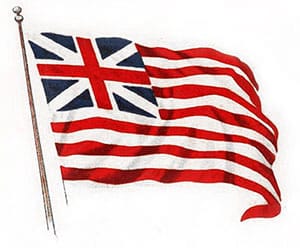
The first flag of the United States incorporated the British Union Jack along with thirteen red and white stripes to represent the newly formed Colonies. The flag was first flown over Prospect Hill in Cambridge, Massachusetts where George Washington’s Continental Army gathered to repulse the British Army, New Year’s Day 1776.
2. Washington Crossing the Delaware Flag
December 25, 1776
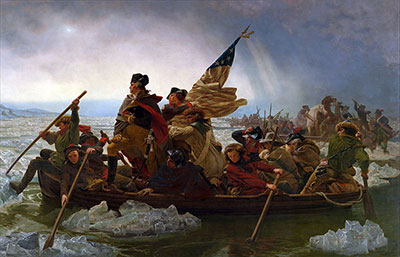
The iconic image of George Washington boldly leading his troops across the roiling waters of the Delaware River during the Battle of Trenton was painted by Emanuel Gottlieb Leutze in 1851. The American flag is proudly held by future President James Monroe in the heroic depiction.
However, we know this flag was not actually there. The Stars and Stripes flag did not yet exist on December 25, 1776, the night of the crossing. It would be created on June 14, 1777, by Philadelphia seamstress Betsy Ross.
See Benjamin Franklin’s List of 13 Virtues.
3. The Betsy Ross Flag — famous American flags
June 14, 1777
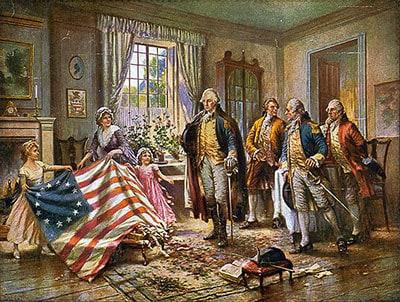
After British troops sieged Boston in 1776 and the Revolutionary War took hold, it became clear to George Washington a new flag design was needed in order to sever ties with the British. Washington commissioned the seamstress Betsy Ross in Philadelphia to sew a new flag without the Union Jack. The Declaration of Independence would be read on July 4, 1776, at Independence Hall in Philadelphia.
The new Stars and Stripes flag was accepted by the Second Continental Congress on June 14, 1777. The story of the Betsy Ross flag has been debated and discredited by some researchers and scholars. Not enough historical evidence exists to support or refute the validity of the narrative.
Early famous American flags
4. The Bennington Flag
August 16, 1777, or June 18, 1812
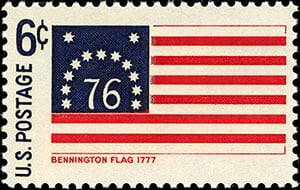
The Bennington flag is purported to be the oldest surviving Stars and Stripes flag. It currently resides at the Bennington Museum in Bennington, Vermont. The large Bennington flag may have been used by General John Stark during the Revolutionary War. But fiber analysis has shown it is more likely from the period associated with the War of 1812. The flag’s “76” commemorates the year of America’s independence and the seven-pointed stars may have origins in Masonic symbolism.
Did you know?
The American flag has gradually changed over the years since its inception in 1777. Congress officially sanctioned design changes to the flag for each new state added to the Union. But the flag as we know it today has not changed since 1960.
5. Star-Spangled Banner Flag — famous American flags
September 12, 1814
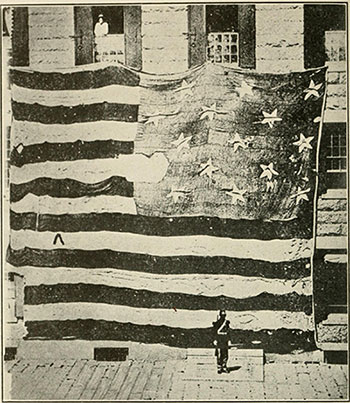
After the War of 1812, a tattered American flag still flew over Fort McHenry in Baltimore Harbor. Francis Scott Key, moved by the resilient image, penned a poem that would become The Star-Spangled Banner on September 14, 1814. The song became the official national anthem in 1931.
6. Fort Sumter Flag
April 13, 1861
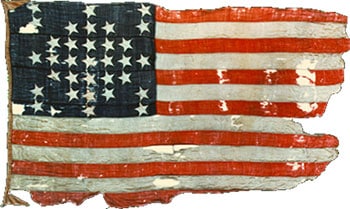
The Civil War began with the attack on Fort Sumter in Charleston harbor, South Carolina. The flag pole at the fort was toppled by Confederate forces during the bombardment. The American flag had 33 stars, arranged in a unique diamond pattern, representing each state in the Union. After the attack on Fort Sumter, President Lincoln considered removing 11 stars to reflect the seceded Confederate states.
Important famous American flags
7. Colored Troops Flag — famous American flags
April 4, 1864
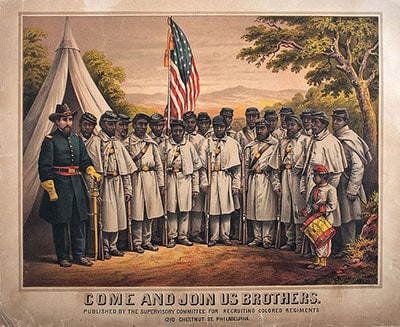
African Americans contributed greatly to the Union victory in the Civil War. The men of the 84th Infantry Regiment were known as the U.S. Colored Troops. The unit fought Civil War battles mainly in Louisiana along with other colored troop regiments and Union volunteers. The flag of the 84th Infantry Colored Troops is memorialized with each battle and date they had fought. It is held by The National Museum of American History.
8. The Lincoln Funeral Flag
April 19, 1865
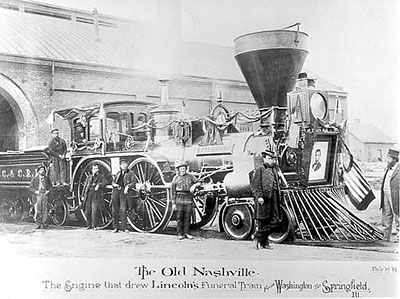
President Abraham Lincoln’s body was carried home by train after his assassination by John Wilkes Booth. The funeral train, which also carried the body of Lincoln’s son William who had died of typhoid early in 1862, was decorated with American flags and funerary bunting. Along the route back to Springfield, Illinois, memorial services were attended by an estimated 25 million Americans in ten cities.
The train retraced the route Lincoln had taken to Washington as President-elect. Lincoln’s body was interred at the Lincoln Tomb at Oak Ridge Cemetery on May 3, 1865. One of the surviving flags from the funeral train is held by The National Museum of American History.
Learn more: Lincoln’s last words.
9. San Juan Hill Flag
July 1, 1898
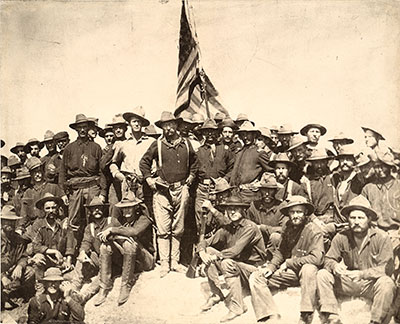
During the Spanish-American War, future U.S. President Teddy Roosevelt leads the First Volunteer Cavalry (called the Rough Riders) to victory on San Juan Hill in Cuba. The soon-to-be 26th President posed for a picture with his troops with the American flag after repulsing heavy artillery fire and helping to end the war. A portion of the original Rough Rider flag is held at the Gettysburg Museum of History, Gettysburg, PA. It was saved by troop trumpeter J. Kirk McCurdy, who narrowly escaped the battle alive with a bullet hole in his hat.
Did you know?
The official colors used in the American flag—Old Glory Red, Old Glory Blue and white—are specified by the U.S. Army along with the Textile Color Card Association. These exact colors must be used to create an official and authentic American flag.
Famous American flags from wartime
10. Pearl Harbor / USS Arizona Flag — famous American flags
December 7, 1941
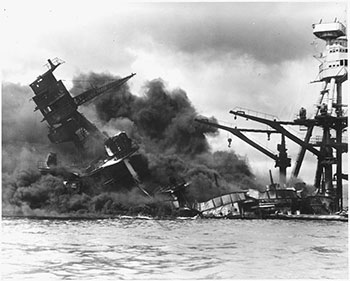
The USS Arizona was stationed in Pearl Harbor when Japanese pilots opened up a bombing campaign in 1941. The American battleship exploded and sank, killing 1,177 sailors and crew. The air attack took out 19 Navy ships, including Arizona. An American flag survived the attack. It had flown on a boat parked on Arizona’s deck. The fuel oil-spattered flag was saved from the wreckage and is now held by the Arizona State Capitol Museum. The USS Arizona Memorial in Honolulu, Hawaii is visited by over two million people each year.
11. The Iwo Jima Flag
February 23, 1945
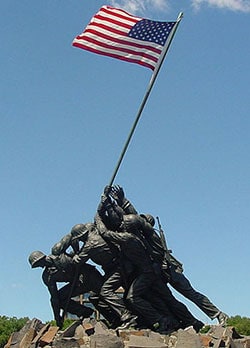
During the battle of Iwo Jima in World War II, five Marines and one Navy corpsman gathered to raise a U.S. flag on Mount Suribachi in the western Pacific. Photographer Joe Rosenthal was there to capture the iconic moment on February 23, 1945. The resulting photograph became one of the most reproduced in history and would win Rosenthal the Pulitzer Prize.
Did you know?
Each color in the American flag holds symbolic values: red symbolizes valor and hardiness; white symbolizes innocence and purity; blue symbolizes justice, vigilance and perserverance.
Modern-age famous American flags
12. The Man on the Moon Flag
July 20, 1969
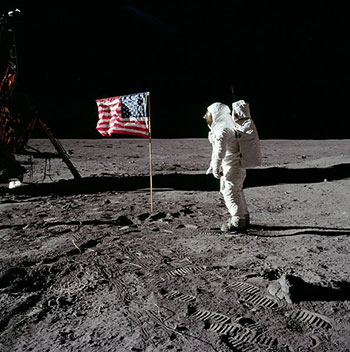
Neil Armstrong walked out of the lunar module Eagle and planted an American flag on the moon’s rocky surface. The Commander of the Apollo 11 and his crew, Buzz Aldrin and Michael Collins, had successfully landed on the moon.
He also left behind a patch honoring the Apollo 1 crew and a plaque that reads “Here men from the planet Earth first set foot upon the moon. July 1969 A.D. We came in peace for all mankind.” Armstrong also spoke the famous words, “That’s one small step for a man, one giant leap for mankind.”
13. The 9/11 Flag / Ground Zero Flag
September 11, 2001
America was attacked on its home soil on September 11, 2001. Three New York City firefighters defiantly raised an American flag above the wreckage of the 9/11 attack site as a beacon of hope. The flag has been displayed at the National September 11 Memorial and Museum located at ground zero. An iconic photo of the firefighters was taken by Thomas E. Franklin of New Jersey’s The Record newspaper. It has become as famous and recognizable as the image of soldiers raising the flag on Iwo Jima in World War II.
Battle Flags
14. World War II D-Day Landing Flag
June 6, 1944
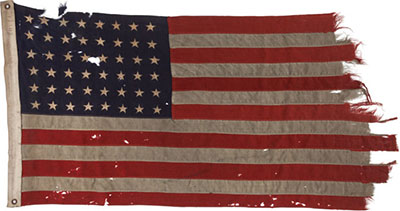
For the 75th anniversary of D-Day, we present this historic and important American flag.
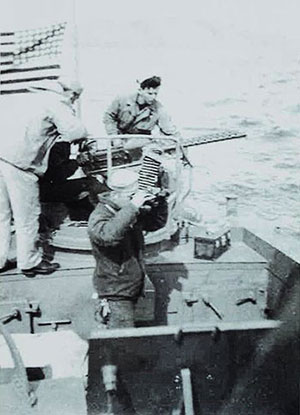
This 48-star American flag flew aboard the control vessel Landing Craft, Control 60 (LCC 60), leading the way at the Normandy beach amphibious assault on June 6, 1944.
The flag is the most important privately-held relic from the D-Day landings. It sold at auction in 2016 for $420,000 (plus auction buyer’s premium) and now resides in the Smithsonian’s National Museum of American History.
15. Siege of Fort Stanwix Flag
August 3, 1777
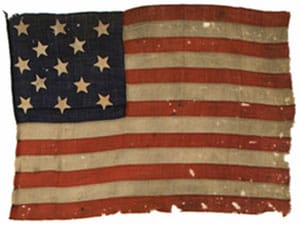
This flag is noted to be the first flag of the United States to ever fly in battle. It flew over Fort Schuyler (the old Fort Stanwix) in New York during the Revolutionary War on August 3, 1777. Colonial troops refused to surrender and eventually repelled British attackers, who fled to Canada.
BONUS VIDEO: The Evolution of the U.S. Flag
Interested in learning more about flags?
Vexillology is the scientific study and research of flags of all types, their forms, uses, and functions.
By Greg Johnson | Published 2/9/2018
Encore
You’re on the Old Glory: The American Flag’s 15 Greatest Moments in History page.
You might like: